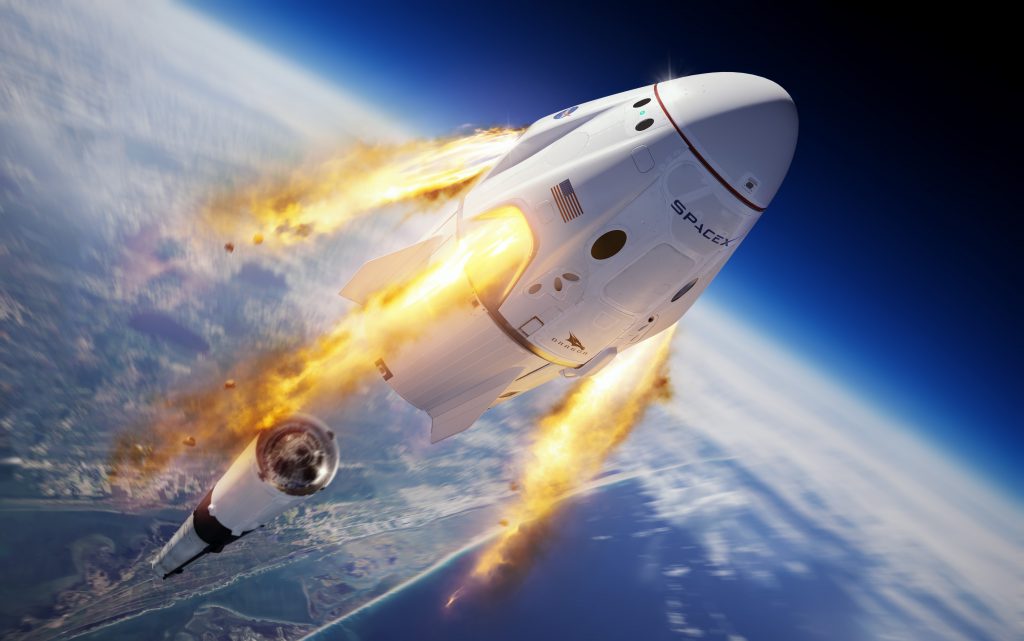
In the short term, the weather has temporarily delayed SpaceX’s plans to put people in space. But in a series of Tweets this week, SpaceX founder Elon Musk reinforced his company’s plans to bring a lot of people to Mars in the near term: 1,000,000 by 2050 to be exact.
NASA and SpaceX were planning a final test of the Crew Dragon spacecraft today, but delayed it due to rough weather where splashdown and recovery of the craft was to occur in the Atlantic. This In-Flight Abort Test is designed to demonstrate Crew Dragon’s ability to safely escape the Falcon 9 rocket in the event of a failure during launch. Once SpaceX passes this test, NASA will allow it to shuttle astronauts to the International Space Station.
For tomorrow’s launch attempt, meteorologists with the U.S. Air Force 45th Space Wing predict a 60% chance of favorable weather toward the opening of the window with a 40% chance toward the end of the window. The primary concerns for launch day being the thick cloud layer and flight through precipitation rule during the launch window. The six hour launch window opens up at 8am Sunday morning; NASA TV will broadcast the NASA Cape Kennedy launch live.
Since the Space Shuttle program came to an end in July 2011, NASA has relied entirely on Russia and their space program to bring astronauts to the International Space Station. SpaceX and Northrup Grumman (formerly Orbital ATK) have been launching unmanned cargo craft to the ISS from the United States, supplementing cargo missions launched by Russia and Japan. Now, SpaceX with the Crew Dragon and Boeing with their Starliner, hope to get people into space from U.S. soil again. If SpaceX’s test is successful on Sunday, they may be able to beat Boeing at bringing astronauts to the ISS later this spring.
Beyond this Crew Dragon spacecraft, SpaceX has also been busy working on their Starship project. This next series of rockets/spacecraft consists of a big spaceship called Starship, which Elon Musk has said will be capable of carrying up to 100 people, and a giant rocket named Super Heavy. Both of these vehicles will be reusable, cutting the cost of spaceflight enough to make Mars colonization and other space feats Musk has plans for economically possible.
In a series of Tweets on Thursday, Musk said he wants to launch 3 flights a day, which translates to 1,000 flights/year with a payload capacity of 100 tons/flight. “Building 100 Starships/year gets to 1,000 in 10 years or 100 megatons/year or maybe around 100,000 people per Earth-Mars orbital sync,” Musk Tweeted. Musk hopes that by 2050, he’ll be able to have enough lift to get a million people to Mars by 2050.